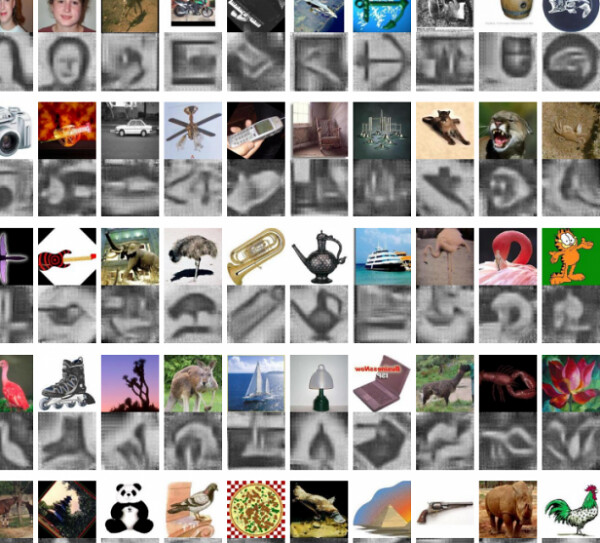
Let us imagine this scene, a vast wheat field planted with oak, as well as create a cloudless sky on a sunny afternoon. When most people read this sentence, you can easily imagine in their mind the pastoral scene. This unique capability allows you to read a description of the scene, imagine this scenario. However, this precious skill may not be unique to humans.
This class in your imagination goes far beyond today's computer thing will come from Japan brought about Hiroharu Kato and Tatsuya Harada, University of Tokyo.
Recently, they released a computer, it is a description of the object can be converted to images. This is a perfect definition of imagination.
Sure is, the imagination of these computers are still relatively simple, sometimes very messy and it doesn't make any sense. But what is undeniable is, this computer represents the computer creativity obviously took a big step forward.
Computer scientists have long used the text managed to process images, this approach is very direct, for example, users in the search engine, enter a word or series of words, and use the keyword is highly relevant images. This is not because the computer has the special ability to understand key words entered by the user. In fact, get results by keyword techniques are very powerful, but on the contrary, in dealing with images will not be able to play out of equivalent capacity.
Therefore, the computer scientists started a few years ago will be treated as a series of pixels of the image, the image will be divided into a series of short sequences, each sequence corresponds to a specific part of the image. For example, a short sequence might correspond to a cup of edges, the skin of a region or a part of the sky.
These short sequences may not make any sense to humans, but can be considered key word for computer. Therefore, a computer analysis of a picture by calculating the sequence of number and frequency, as by counting the frequency of words in the document. Computer scientists say that these sequences as "Visual words".
Kato and Harada is the opposite line and want to view Visual distribution of keywords, and get the original image. This is a very difficult technical problems, although Visual keywords can describe a portion of an image, it does not explain what position in the image.
Kato and Harada with two different approaches to dealing with this problem. Hermes S6 case
First is to assess how each Visual keyword and other Visual keywords together. This process is very simple, because Visual keyword without any apparent shape, and therefore cannot fit together like a jigsaw puzzle.
The second method is to assess a given Visual keywords should appear in the image-specific part of the possibilities. For example, the vision in the sky region keywords are more likely to appear at the top of the image.
With these two methods, and finally Kato and Harada uses its own method of enabling computers to understand human common everyday sensations, and generate the corresponding image. They will convert every word in your statement Visual keyword, and then converts the keywords into images. Keywords the same ordinary words into Visual is a tough task.
The entire project difficulties, but this is a promising start, and want to be able to open up a road for image creation system to new generations.
via technologyreview

998 people voted
Millet Note Hermes S6 case
Millet Note using the front panel 2.5D glass design, so the edges of the screen we can see a "film killers"-level arc. Using special 3D glasses behind the design, the two sides are arcs, the Visual effect is somewhat similar to the Samsung Galaxy Note Edge surface of the screen.
View details of the voting >>

No comments:
Post a Comment